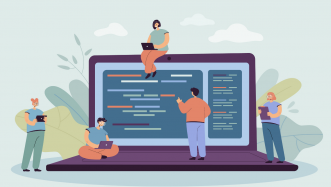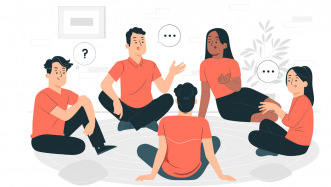We have been publishing flipped lesson plans since 2019, and are really happy how popular they have become among our teacher community. We want to share with you what flipped classroom is, how it benefits students and how to use our worksheets to apply flipped classroom for teaching English in your classroom.
What is flipped classroom all about?

Flipped classroom is a blended learning-teaching model based on the principle that the classroom is where the active part of learning should take place. It’s ‘flipped’ (or ‘inverted’) because it requires students to do some preparation before the lesson so that the time spent with the teacher is used more effectively. Before the lesson, students have their first look at a new language or a video, and get ready for what is going to happen in the lesson. During the class, the focus is on getting semi-controlled and free practice, using the new language structures, and discussing the topic of the video. In other words, the lesson is about production rather than passive learning this way, the precious classroom time is used more actively.
Problem-solving tasks, debates, role-plays, discussions and brainstorming are often skipped by ESL teachers due to lack of time. The flipped classroom approach allows for these interactive activities to take place. The pre-class part of a flipped lesson might also focus on establishing the lesson context to make students prepared for what they will study in the classroom.
You can learn more about flipped classroom here, here and here.
What benefits does flipped classroom bring?
Introducing the flipped classroom approach allows students to take control of their learning process and become more autonomous. They are able to study at their own pace or watch a video as many times as necessary. They are also more motivated and more likely to engage in the lesson. Additionally, students are exposed to English outside the classroom, which helps create a habit of doing it more often.

Researchers have found that the flipped classroom method applied to ESL teaching makes students more confident and prepared for language production. Students achieved significantly better results, almost 30% higher, when the flipped model was applied. Flipped classroom also allowed students to acquire a more independent learning culture. Want to know more? This study analyzed the potential of flipped classroom in ESL teaching and this one presents the results of applying flipped classroom for teaching English grammar to B1 students.
The flipped approach has proven to be really beneficial, but preparing materials for a flipped lesson is very time-consuming. This is where ESL Brains comes into play!
Flipped lesson with ESL Brains
Let’s explain how we implemented flipped classroom into ELT lesson plans and how to use it. Each flipped lesson plan is divided into two parts:
- Pre-class activities – This part sets the scene. It lets students independently study new grammar or lexis, watch a video, prepare arguments or notes for the lesson. In other words, it provides context for the in-class activities.
- In-class activities – This is the part where students practise what they have studied, discuss the issues from the video and expand what they already know. They do lots of speaking and use the target language in different situations.
Needless to say, there is an e-lesson plan available for each flipped lesson so that your online classes can run smoothly too.
You can see where the pre-class and in-class sections start in the Teacher’s Version of a flipped lesson plan (or as transition slides in e-lesson plans). What we recommend doing is to send your students only the pre-class section before your lesson, so that they are not tempted to have a peek into what’s going to happen during the lesson (and to prevent some overly-excited students to do everything before the class). If you use PDFs, split the Student’s Version into two files – the pre-class and the in-class ones. We tend to fit the pre-class section on 1-2 pages so you can easily divide the file. With e-lesson plans, it’s even easier. You can copy+paste just the slides that your students should get before the lesson. It’s also a good practice to send your students the answer key a day before the lesson so they can check their work. Of course, you need to establish some rules with your students so that they do the pre-class section before getting the key.
Take a look at some free sample ESL Brains flipped lesson plans:
What if students don’t do the pre-class work?
There’s no reason to skip out on Flipped Lessons if students don’t do their homework! The pre-class portion can easily be tackled together in class, pairing up those who did their work with those who didn’t to offer some support. Plus, you can cover the grammar or vocabulary explanations during the lesson itself, leaving the practice part for homework. It’s all about finding what works best for your students and adapting as you go. Over time, showing up unprepared might lead students to realize the value of completing homework tasks, nudging them to own their learning journey.















Interesting idea… do you have a video of this in action?
Do you mean a video of flipped classroom lesson? If so, you should find some online.
amazing
Hello Esl brain team, I had been wondering about flipped lessons. Thank you!
Thank you! Great Ideas
For the flipped lessons, does the Lesson Time (60 mins, 75 mins, etc.) include the time the Student spends at home, or is this the in-class time only?
The lesson time given refers to the in-class part of the lesson. As we have been creating this type of lessons over years, we will review older Flipped lessons to make sure that’s true everywhere on the website.